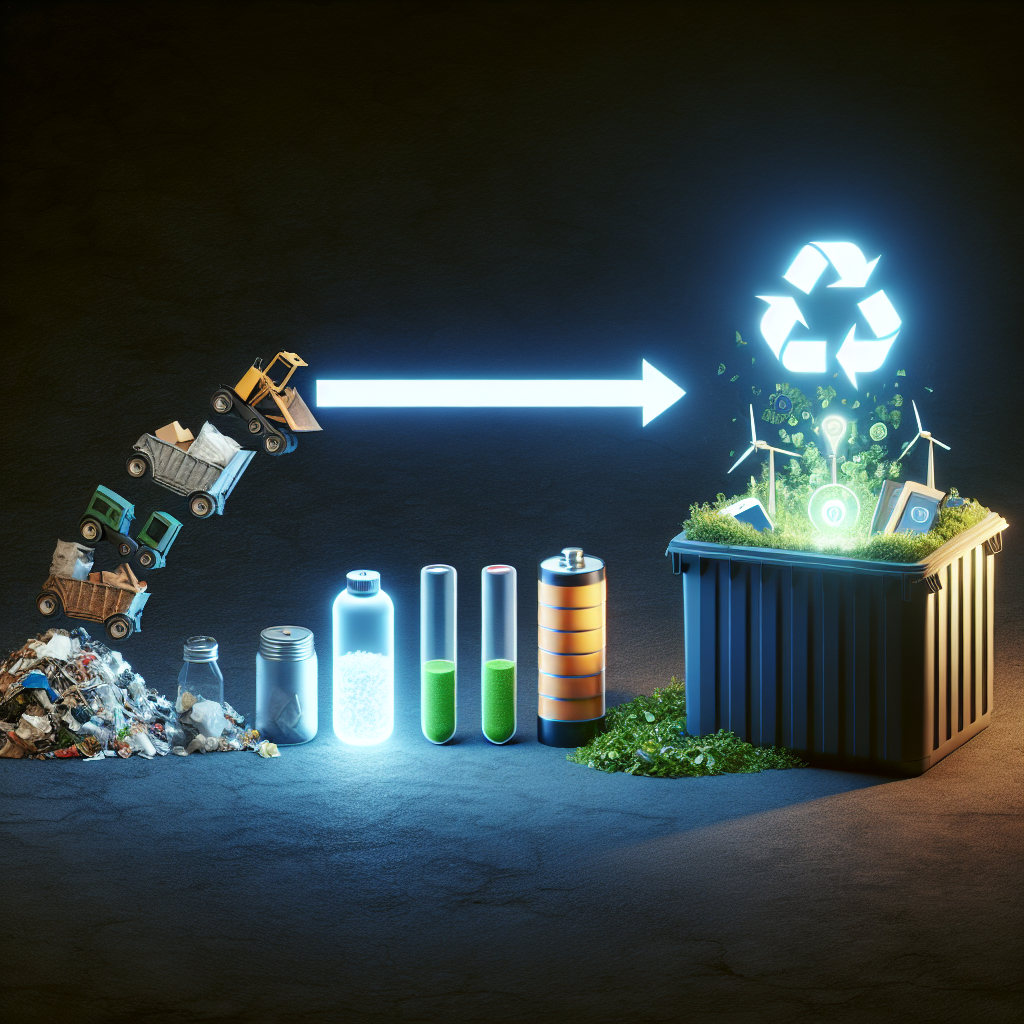From Waste to Power: Bioenergy Storage Solutions
In a world increasingly focused on sustainable energy solutions, bioenergy emerges as a key player. Harnessing the power of organic materials to generate energy not only provides an alternative to fossil fuels but also helps address the issue of waste management. As we delve deeper into the topic, we’ll explore how bioenergy storage solutions are evolving to become more efficient, reliable, and pivotal in our transition towards a cleaner energy future.
Understanding Bioenergy
Bioenergy is derived from biomass—organic materials such as plant and animal waste, agricultural residues, and even specific crops grown for energy production. The conversion of biomass into energy can occur through various processes, including combustion, gasification, anaerobic digestion, and fermentation. These processes produce biofuels, biogas, and bioelectricity, which can be used for heating, electricity generation, and as vehicular fuel.
Conversion Processes
1. Combustion: Burning biomass to produce heat, which can then be used to generate electricity.
2. Gasification: Converting biomass into syngas (a mixture of hydrogen, carbon monoxide, and other gases) through high-temperature processes.
3. Anaerobic Digestion: Breaking down organic material in the absence of oxygen to produce biogas (mainly methane and carbon dioxide).
4. Fermentation: Using microorganisms to convert biomass into ethanol or other biofuels.
Bioenergy Storage Solutions
One of the critical challenges of bioenergy is storage. Unlike fossil fuels, which are dense and easy to store, bioenergy requires sophisticated storage solutions due to its lower energy density and potential for degradation.
Types of Bioenergy Storage
1. Biogas Storage: Biogas, primarily methane, can be stored in pressurized tanks or underground gas holders. Innovations such as flexible membrane gas holders and advanced scrubbing technologies are enhancing the efficiency and safety of biogas storage.
2. Biofuel Storage: Biofuels like bioethanol and biodiesel can be stored in tanks similar to those used for conventional fuels. However, they require modifications to prevent issues like water absorption and microbial contamination. Advanced materials and coatings for storage tanks are being developed to address these challenges.
3. Thermal Storage: Thermal energy storage involves storing heat generated from biomass combustion or other processes. This can be done using materials like molten salts or phase change materials, which store and release heat as they change states.
4. Electricity Storage: Electricity generated from bioenergy can be stored using batteries, flywheels, or other conventional energy storage technologies. Recent advancements in battery technology, such as lithium-ion and solid-state batteries, are making electricity storage more viable for bioenergy applications.
Advantages of Bioenergy Storage
Environmental Benefits
Bioenergy storage solutions contribute significantly to environmental sustainability. By capturing and storing biogas, we reduce methane emissions—a potent greenhouse gas. Proper storage of biofuels ensures efficient use and minimizes the risk of spills and contamination.
Energy Security
Bioenergy storage enhances energy security by providing a reliable and renewable source of energy. It offers a buffer against the volatility of fossil fuel prices and supply disruptions, ensuring a steady energy supply.
Economic Opportunities
The development and deployment of bioenergy storage technologies create economic opportunities. It stimulates local economies by generating jobs in the construction, operation, and maintenance of storage facilities. Additionally, it provides farmers and waste producers with new revenue streams through the sale of biomass feedstock.
Challenges and Innovations
Despite its potential, bioenergy storage faces several challenges. The lower energy density of biomass compared to fossil fuels means that larger storage facilities are needed. Additionally, the decomposition of organic materials can lead to energy losses and safety hazards.
Innovations in Bioenergy Storage
1. Advanced Materials: Researchers are exploring advanced materials to improve the efficiency and durability of bioenergy storage systems. For instance, nanomaterials and composites can enhance the performance of biogas storage membranes and biofuel tanks.
2. Integrated Systems: Integrating bioenergy with other renewable energy sources, such as solar and wind, can optimize storage and utilization. Hybrid systems can balance intermittent energy supply and demand, ensuring a more stable energy output.
3. Smart Monitoring: The use of IoT (Internet of Things) and advanced sensors allows for real-time monitoring and control of bioenergy storage systems. This enhances the safety, efficiency, and reliability of storage operations.
4. Microbial Engineering: Advances in microbial engineering are improving anaerobic digestion processes, increasing biogas yields, and reducing the time required for biomass breakdown.
FAQs
What is bioenergy?
Bioenergy is energy derived from organic materials (biomass), including plant and animal waste, agricultural residues, and specially grown energy crops. It can be converted into biofuels, biogas, and bioelectricity for various applications.
How is bioenergy stored?
Bioenergy can be stored in several ways, including biogas storage in pressurized tanks, biofuel storage in specialized tanks, thermal energy storage using materials like molten salts, and electricity storage using batteries or flywheels.
What are the benefits of bioenergy storage?
Bioenergy storage offers environmental benefits by reducing greenhouse gas emissions, enhances energy security by providing a reliable renewable energy source, and creates economic opportunities through job creation and new revenue streams for farmers and waste producers.
What are the challenges of bioenergy storage?
Challenges include the lower energy density of biomass compared to fossil fuels, which requires larger storage facilities, and the potential for energy losses and safety hazards due to the decomposition of organic materials.
What innovations are improving bioenergy storage?
Innovations include advanced materials for storage systems, integration with other renewable energy sources, smart monitoring using IoT and sensors, and advances in microbial engineering to enhance anaerobic digestion processes.
Is bioenergy storage economically viable?
Yes, the development of efficient bioenergy storage solutions can be economically viable, especially with advancements in technology that reduce costs and improve performance. It also provides economic benefits by creating jobs and generating new revenue streams.
How does bioenergy contribute to sustainability?
Bioenergy contributes to sustainability by providing a renewable energy source that reduces dependence on fossil fuels, decreases greenhouse gas emissions, and promotes waste management by utilizing organic materials.

